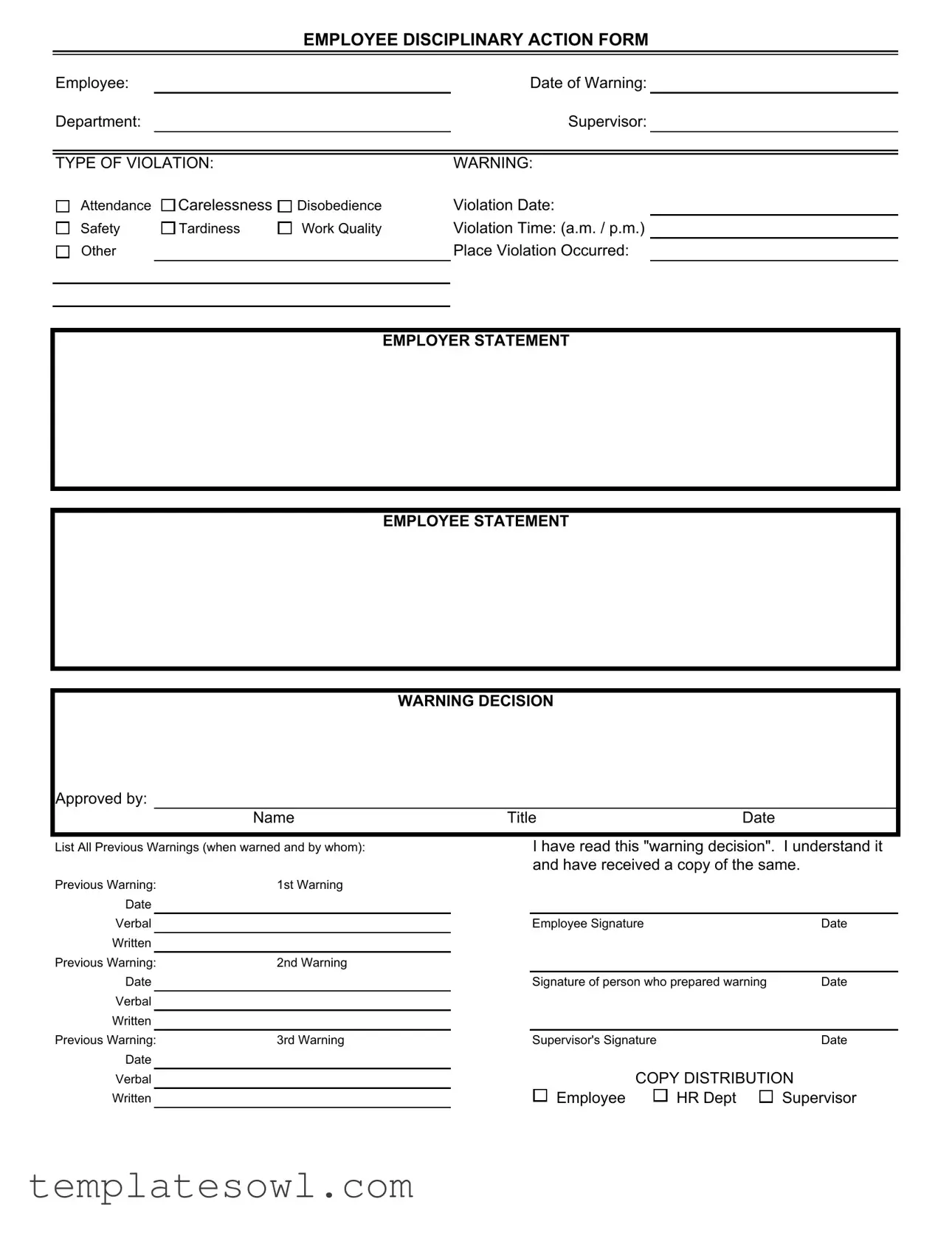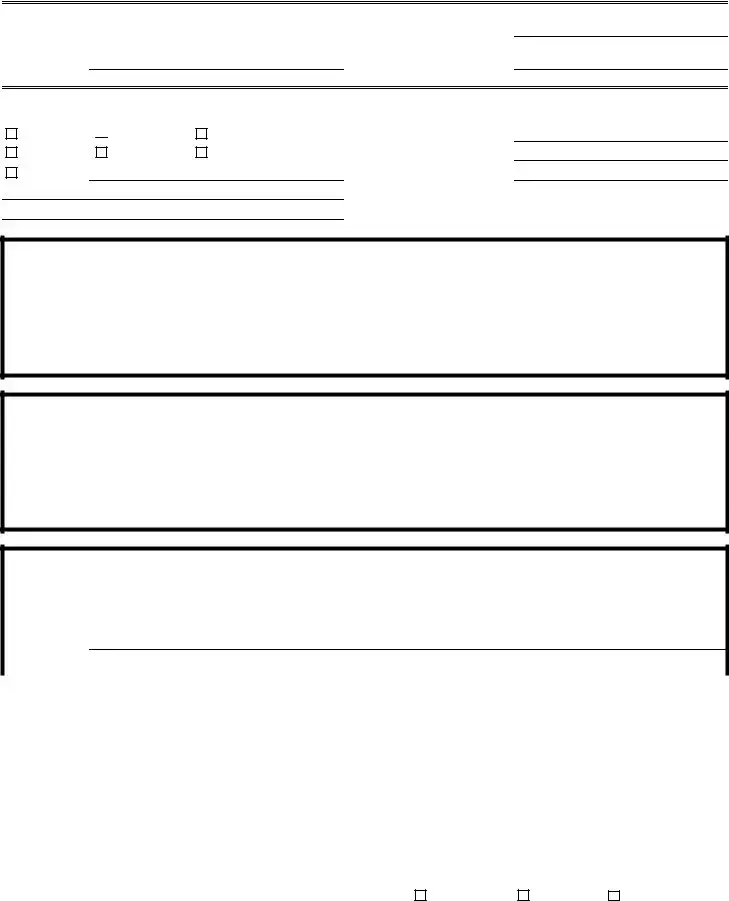What is the purpose of the Disciplinary Action form?
The Disciplinary Action form is used to document employee violations and the employer's response. The goal is to ensure that all disciplinary actions are recorded properly. This helps maintain a consistent approach for addressing issues in the workplace.
Who should fill out the Disciplinary Action form?
The supervisor or manager should fill out the form. They are responsible for documenting the issue and any prior warnings that may have been given. The employee involved also needs to acknowledge the warning by signing the form.
What types of violations are noted in the form?
The form includes various types of violations, such as attendance issues, carelessness, safety concerns, tardiness, or any other relevant infractions. This allows for a clear categorization of the issue being addressed.
What information is required on the form?
Key details must be included, such as the employee's name, the date of the warning, the department, the supervisor's name, the type of violation, and specific dates and times when violations occurred. In addition, a summary of both the employer's and employee's statements should be recorded.
How does the warning decision process work?
The warning decision process involves an evaluation of the violation by the supervisor. After reviewing the situation, the supervisor will approve the decision and sign the form. This ensures that the disciplinary action is agreed upon and formalized.
Can an employee dispute a warning recorded on the form?
Yes. Employees have the right to dispute disciplinary actions. They can include their statement on the form, explaining their perspective on the situation. This information will be kept on record along with the warning.
What happens if an employee receives multiple warnings?
If an employee receives multiple warnings, the form should document each instance with the relevant dates and types of communication (verbal or written). This documentation is crucial for tracking patterns of behavior and may lead to further disciplinary actions if needed.
What is the copy distribution process?
After the form is completed and signed by all parties, copies are distributed to the employee, the human resources department, and the supervisor. This ensures that everyone involved has the necessary documentation on hand for future reference.
Is the Disciplinary Action form confidential?
The contents of the Disciplinary Action form should be treated confidentially. Only authorized personnel, such as the employee's supervisor and human resources staff, should have access to the document. Respecting this confidentiality helps maintain trust in the workplace.
How should an employee respond after receiving a warning?
After receiving a warning, an employee should read the document carefully, sign it, and ensure they understand the reasons behind the warning. It's also beneficial to have a follow-up discussion with the supervisor to clarify expectations moving forward and learn how to improve performance.


 Carelessness
Carelessness